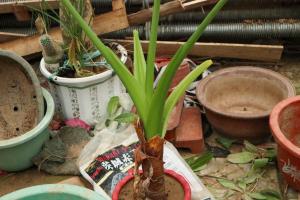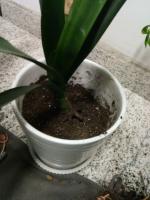Can I Grow Pitcher Plants in Water?
Pitcher plants are carnivorous plants that are known for their ability to trap and digest insects. They have a unique appearance that makes them a popular choice among houseplant enthusiasts. If you're thinking about growing pitcher plants, you may be wondering if it's possible to grow them in water. In this article, we'll explore this question and provide you with all the information you need to know about growing pitcher plants in water.
The Basics of Pitcher Plant Growing
Before we dive into the specifics of growing pitcher plants in water, let's take a quick look at the basics of pitcher plant growing. Pitcher plants are native to areas with high humidity and moisture, so they require a damp and humid environment to thrive. They also require plenty of bright, indirect sunlight to grow properly. In addition, pitcher plants typically grow in acidic soil that is rich in nutrients.
Can You Grow Pitcher Plants in Water?
So, can you grow pitcher plants in water? The short answer is yes, you can. However, it's important to understand that growing pitcher plants in water requires a slightly different approach than growing them in soil. When grown in water, pitcher plants do not have access to the same nutrients as they do in soil. As a result, you'll need to add additional nutrients to the water to ensure that the plants can grow properly.
How to Grow Pitcher Plants in Water
If you're interested in growing pitcher plants in water, here's what you'll need to do:
Step 1: Choose a container that is large enough to hold the pitcher plant and enough water to keep the plant's roots submerged. A tall and narrow container works well for pitcher plants.
Step 2: Fill the container with distilled or rainwater. Tap water contains minerals that can harm pitcher plants, so it's best to avoid using it.
Step 3: Add a small amount of fertilizer to the water. Look for a fertilizer that is designed for carnivorous plants.
Step 4: Place the pitcher plant in the container, making sure that the roots are submerged in the water.
Step 5: Place the container in a bright area that receives indirect sunlight. Avoid placing the plant in direct sunlight, as this can cause the water to heat up and harm the plant.
Step 6: Check the water level regularly and add more water as needed to keep the roots submerged.
Potential Issues with Growing Pitcher Plants in Water
While it is possible to grow pitcher plants in water, there are a few potential issues that you may run into. One of the biggest challenges is maintaining the proper nutrient levels in the water. Pitcher plants require a very specific balance of nutrients to grow properly, and it can be difficult to achieve this balance in a water-based environment. Additionally, pitcher plants that are grown in water may be more susceptible to rot and disease, as they do not have the same natural defenses as plants that grow in soil.
The Bottom Line
So, can you grow pitcher plants in water? Yes, you can. However, it's important to approach water-based pitcher plant growing with care and attention to detail. If you're up for the challenge, growing pitcher plants in water can be a rewarding and beautiful addition to your home.

 how many times do yo...
how many times do yo... how many planted tre...
how many planted tre... how many pine trees ...
how many pine trees ... how many pecan trees...
how many pecan trees... how many plants comp...
how many plants comp... how many plants can ...
how many plants can ... how many plants and ...
how many plants and ... how many pepper plan...
how many pepper plan...






























